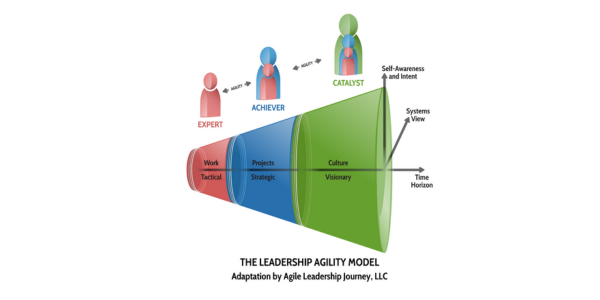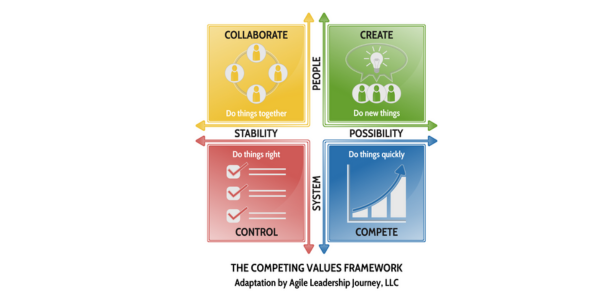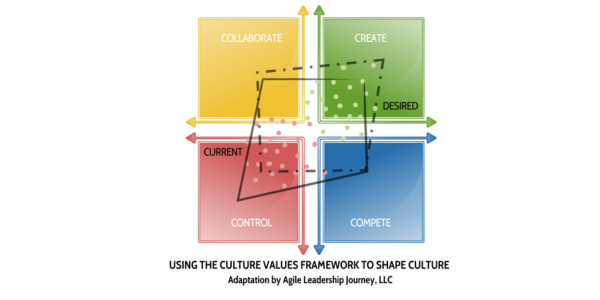“Culture eats strategy for breakfast.” This quote is perhaps one of the most familiar business phrases of all time. Yet, while most leaders agree on the importance of culture, surprisingly few actually devote serious attention to shaping workplace culture. Why is this the case? What role should culture play in business success? And how does agile leadership help shape successful organizations? In this article, we’ll explore these questions in detail…
Why Smart Leaders Value Culture
Just how deeply should leaders focus on culture? Edgar Schein is widely considered the father of organizational culture. In his book, Organizational Culture and Leadership, he describes leadership and culture as two sides of the same coin.
In other words, leaders invariably shape culture for better or worse, whether they intend to or not. It starts when they establish organizational policies and practices. Then, through their daily actions, leaders demonstrate their commitment to these standards. Ultimately, they become role models for expected behaviors.
This aligns with Andrea Tomasini’s definition of culture as “the set of behaviors that are accepted and expected.”
Culture Change: A Case In Point
One example of a leadership-driven culture shift comes from a large telecom equipment provider. The company’s culture was highly hierarchical and control oriented. Employees were even forbidden from posting anything on their office walls or windows.
Although the company was a recognized market leader, it was losing market share to smaller competitors. This was when executives recognized the need to build a more innovative, collaborative culture.
Leaders visited directly with teams to ask what they needed to work in more collaborative, innovative, agile ways. They documented the various responses on sticky notes, and then posted these comments on a highly-visible wall in the building’s atrium. But the process didn’t end there.
In essence, this wall of sticky notes became a Kanban board that helped drive organizational change. Leaders started taking action on each request. They began meeting weekly at the board, where everyone would see them moving sticky notes from “To Do” to “In Progress” and eventually to the “Done” section when each action was completed.
Within months, teams began creating their own Kanban boards and collaborating daily. Sticky notes on the walls became a new cultural norm. The leadership team’s visible actions changed employee understanding of behaviors that are accepted and expected.
How Does Agile Leadership Help?
In their book Leadership Agility, Bill Joiner and Stephen Josephs offer a well-researched, practical model for leadership development. Think of leadership skills as a series of vertical stages of increasing effectiveness. As leaders develop capabilities, they move from Expert to Achiever to Catalyst.
These stages are like gears in a car’s transmission, letting leaders “shift” into different speeds as needed. In fact, research shows that the most effective leaders have the agility to shift fluidly between leadership modes – as well as the awareness to know which leadership mode is most appropriate in a given situation.

Most leaders start at the “Expert” stage. Experts are focused on hands-on work that leverages their functional expertise. They tend to focus on tactics and solving immediate problems. However, they tend to lack awareness of their leadership style and have low emotional and social intelligence.
At the “Achiever” stage, leaders begin to rely more on others. They are focused on results and outcomes, and are willing to delegate the “how” to others. They become more invested in influencing others to accomplish their goals. They’re also more aware that they need buy-in to achieve the best results.
When leaders reach the “Catalyst” stage, they develop a broader, more systemic perspective, long-term orientation, strong self-awareness, social awareness, and situational awareness. They realize that goal-setting, alone, isn’t enough to motivate people. Vision and purpose are also essential. And they genuinely believe people are assets — not just “resources.”
How Agile Leadership Affects Workplace Culture
Agile leaders demonstrate multiple capabilities that are vital for shaping organizational culture:
1. Situational Awareness and Balance
Agile leaders are able to shift their approach between expert, achiever, and catalyst modes, as needed. They can operate effectively at a tactical, strategic or visionary level. This means agile leaders are adept at tackling a wide range of problems. By tapping into this broad set of skills, they serve as role models to others in the organization, creating a culture that values leadership growth and development.
2. Long-Term Visionary Orientation
“Catalyst” leaders devote more of their energy to a long-term vision for their organization. They realize the key role culture plays in achieving this vision. And they realize there is no silver-bullet shortcut that creates a positive culture. This is why they move deliberately and persistently to build a better culture. As role models, they help other leaders in their orbit develop a similar visionary perspective.
3. People-Centered Leadership
Catalyst leaders have strong social intelligence and genuine empathy for people on their team. They are willing to invest time in coaching and mentoring people for personal growth. This goes beyond merely setting goals, measuring performance, or demanding results. This leadership style serves as a role model for all in an environment where people feel genuinely valued.
4. Ability to Navigate a VUCA World
Today’s fast-paced global economy is volatile, uncertain, complex, and ambiguous (VUCA). In this environment, agile leadership is essential. It frees leaders to let go of the illusion of control and gives them the confidence to help others do the same. Agile leaders frame complex challenges as learning opportunities rather than neatly defined execution tasks. Instead of punishing small failures, they reward learning. This kind of support encourages people to take initiative and tackle complex problems.
5. Concern for Psychological Safety
By combining two agile leadership capabilities we’ve mentioned – social intelligence and willingness to reward learning – leaders can establish a sense of psychological safety. When people feel it’s safe to participate, learn, contribute, and even challenge the status quo – innovation can flourish. By actively promoting an atmosphere of psychological safety, leaders can help their organization evolve and succeed over time.
Modeling and Shaping Culture
For leaders who want to proactively shape workplace culture, a cultural assessment model can be particularly helpful. At Agile Leadership Journey, we rely on the Competing Value Framework (CVF) by Kim S. Cameron and colleagues. This CVF model focuses on four cultural archetypes: Collaborate, Create, Compete, and Control:

CVF research indicates that no singular “best” culture exists. Instead, the most successful organizations try to balance the four archetypes. CVF provides a model for assessing an organization’s culture “shape” – the relative strength of each value system and culture archetype. With this tangible assessment, leaders can make deliberate choices about actions that can shift the culture in a desired direction.

Because culture is so complex, leaders should treat these activities as experiments — assuming the outcome is uncertain, and side effects will be difficult to predict.
Our experience with CVF and culture shaping reveals that these techniques can lead to a measurable shift in culture. However, significant changes often take years to manifest fully. This means organizations need to rely on the strength of “Catalyst” leaders with the agility, wisdom and skills to persist through a complex cultural transformation.
Post Views: 4,689